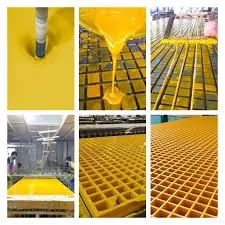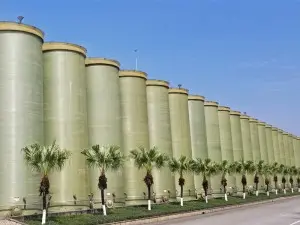
-
 Afrikaans
Afrikaans -
 Albanian
Albanian -
 Amharic
Amharic -
 Arabic
Arabic -
 Armenian
Armenian -
 Azerbaijani
Azerbaijani -
 Basque
Basque -
 Belarusian
Belarusian -
 Bengali
Bengali -
 Bosnian
Bosnian -
 Bulgarian
Bulgarian -
 Catalan
Catalan -
 Cebuano
Cebuano -
 China
China -
 China (Taiwan)
China (Taiwan) -
 Corsican
Corsican -
 Croatian
Croatian -
 Czech
Czech -
 Danish
Danish -
 Dutch
Dutch -
 English
English -
 Esperanto
Esperanto -
 Estonian
Estonian -
 Finnish
Finnish -
 French
French -
 Frisian
Frisian -
 Galician
Galician -
 Georgian
Georgian -
 German
German -
 Greek
Greek -
 Gujarati
Gujarati -
 Haitian Creole
Haitian Creole -
 hausa
hausa -
 hawaiian
hawaiian -
 Hebrew
Hebrew -
 Hindi
Hindi -
 Miao
Miao -
 Hungarian
Hungarian -
 Icelandic
Icelandic -
 igbo
igbo -
 Indonesian
Indonesian -
 irish
irish -
 Italian
Italian -
 Japanese
Japanese -
 Javanese
Javanese -
 Kannada
Kannada -
 kazakh
kazakh -
 Khmer
Khmer -
 Rwandese
Rwandese -
 Korean
Korean -
 Kurdish
Kurdish -
 Kyrgyz
Kyrgyz -
 Lao
Lao -
 Latin
Latin -
 Latvian
Latvian -
 Lithuanian
Lithuanian -
 Luxembourgish
Luxembourgish -
 Macedonian
Macedonian -
 Malgashi
Malgashi -
 Malay
Malay -
 Malayalam
Malayalam -
 Maltese
Maltese -
 Maori
Maori -
 Marathi
Marathi -
 Mongolian
Mongolian -
 Myanmar
Myanmar -
 Nepali
Nepali -
 Norwegian
Norwegian -
 Norwegian
Norwegian -
 Occitan
Occitan -
 Pashto
Pashto -
 Persian
Persian -
 Polish
Polish -
 Portuguese
Portuguese -
 Punjabi
Punjabi -
 Romanian
Romanian -
 Russian
Russian -
 Samoan
Samoan -
 Scottish Gaelic
Scottish Gaelic -
 Serbian
Serbian -
 Sesotho
Sesotho -
 Shona
Shona -
 Sindhi
Sindhi -
 Sinhala
Sinhala -
 Slovak
Slovak -
 Slovenian
Slovenian -
 Somali
Somali -
 Spanish
Spanish -
 Sundanese
Sundanese -
 Swahili
Swahili -
 Swedish
Swedish -
 Tagalog
Tagalog -
 Tajik
Tajik -
 Tamil
Tamil -
 Tatar
Tatar -
 Telugu
Telugu -
 Thai
Thai -
 Turkish
Turkish -
 Turkmen
Turkmen -
 Ukrainian
Ukrainian -
 Urdu
Urdu -
 Uighur
Uighur -
 Uzbek
Uzbek -
 Vietnamese
Vietnamese -
 Welsh
Welsh -
 Bantu
Bantu -
 Yiddish
Yiddish -
 Yoruba
Yoruba -
 Zulu
Zulu
Feb . 14, 2025 10:50
Back to list
fiberglass insulation tank
Fiberglass insulation tanks have become a cornerstone in the realm of efficient thermal management and storage solutions across various industries. With their unique combination of durability, versatility, and thermal resistance, these tanks are now considered an optimal choice for both commercial and residential applications. This article discusses the numerous advantages of fiberglass insulation tanks and why they are gaining favor over traditional materials.
Safety is another key advantage of fiberglass insulation tanks. Fiberglass does not conduct electricity, minimizing the risk of hazardous sparking—a critical safety feature when storing flammable materials. Furthermore, fiberglass is non-toxic and environmentally friendly, offering a safer alternative for both workers and the surrounding environment. The thermal efficiency of fiberglass insulation tanks contributes directly to energy savings. By minimizing heat loss, these tanks reduce the energy required to maintain the contents at desired temperatures. This reduction in energy usage not only lowers operational costs but also contributes to a lower carbon footprint, aligning with global sustainability initiatives. From a regulatory standpoint, fiberglass insulation tanks meet a variety of industry standards, which underscores their reliability and safety. Manufacturers design these tanks to comply with stringent guidelines specified by organizations such as the American Society of Mechanical Engineers (ASME), the National Sanitation Foundation (NSF), and other governing bodies depending on the application. In conclusion, fiberglass insulation tanks offer a multitude of benefits that make them a superior choice for thermal insulation and storage across various industries. Their combination of corrosion resistance, adaptability, lightweight structure, safety features, and compliance with industry standards ensures that they provide long-term value to any operation. As industries continue to prioritize efficiency and sustainability, the adoption of fiberglass insulation tanks is poised to increase, making them a future-forward choice that underscores contemporary industry needs.


Safety is another key advantage of fiberglass insulation tanks. Fiberglass does not conduct electricity, minimizing the risk of hazardous sparking—a critical safety feature when storing flammable materials. Furthermore, fiberglass is non-toxic and environmentally friendly, offering a safer alternative for both workers and the surrounding environment. The thermal efficiency of fiberglass insulation tanks contributes directly to energy savings. By minimizing heat loss, these tanks reduce the energy required to maintain the contents at desired temperatures. This reduction in energy usage not only lowers operational costs but also contributes to a lower carbon footprint, aligning with global sustainability initiatives. From a regulatory standpoint, fiberglass insulation tanks meet a variety of industry standards, which underscores their reliability and safety. Manufacturers design these tanks to comply with stringent guidelines specified by organizations such as the American Society of Mechanical Engineers (ASME), the National Sanitation Foundation (NSF), and other governing bodies depending on the application. In conclusion, fiberglass insulation tanks offer a multitude of benefits that make them a superior choice for thermal insulation and storage across various industries. Their combination of corrosion resistance, adaptability, lightweight structure, safety features, and compliance with industry standards ensures that they provide long-term value to any operation. As industries continue to prioritize efficiency and sustainability, the adoption of fiberglass insulation tanks is poised to increase, making them a future-forward choice that underscores contemporary industry needs.
Next:
Related Products









